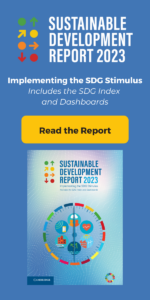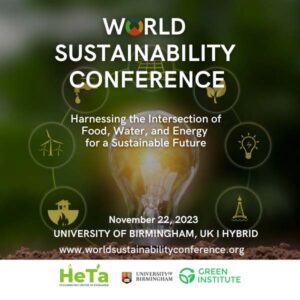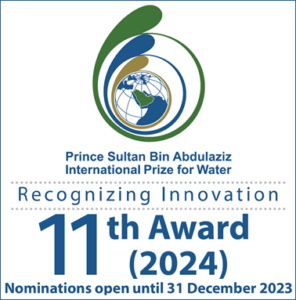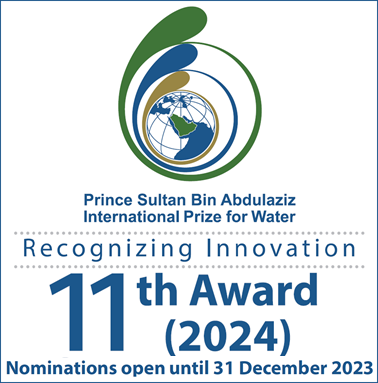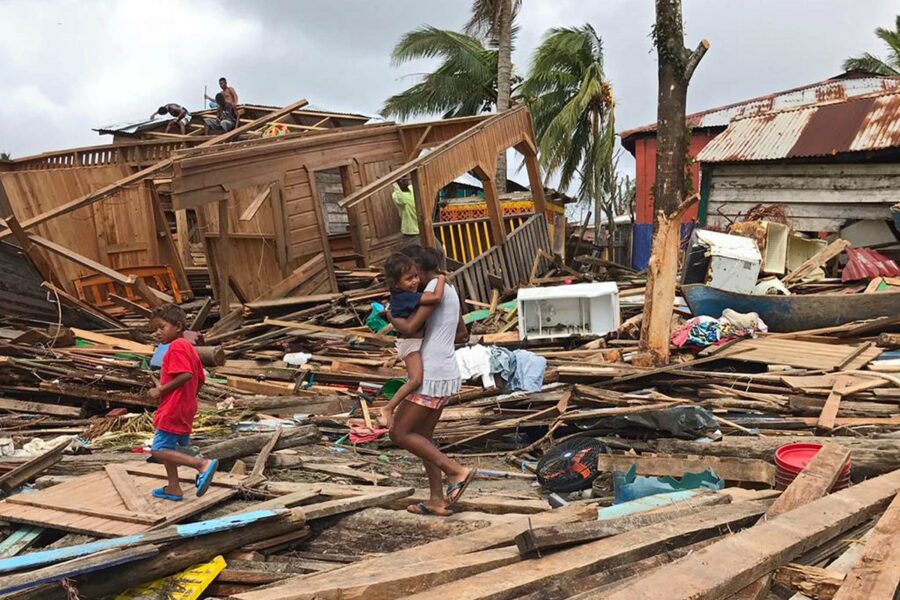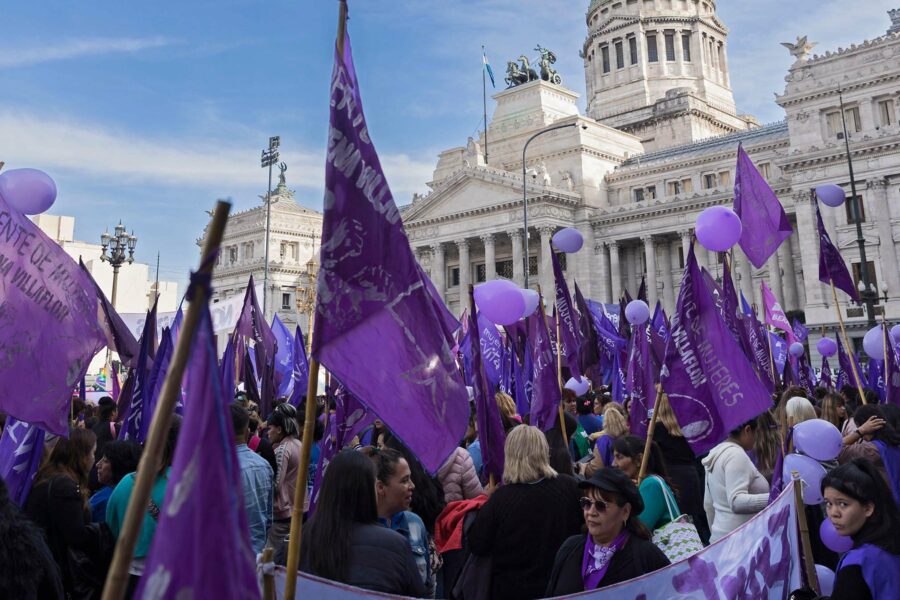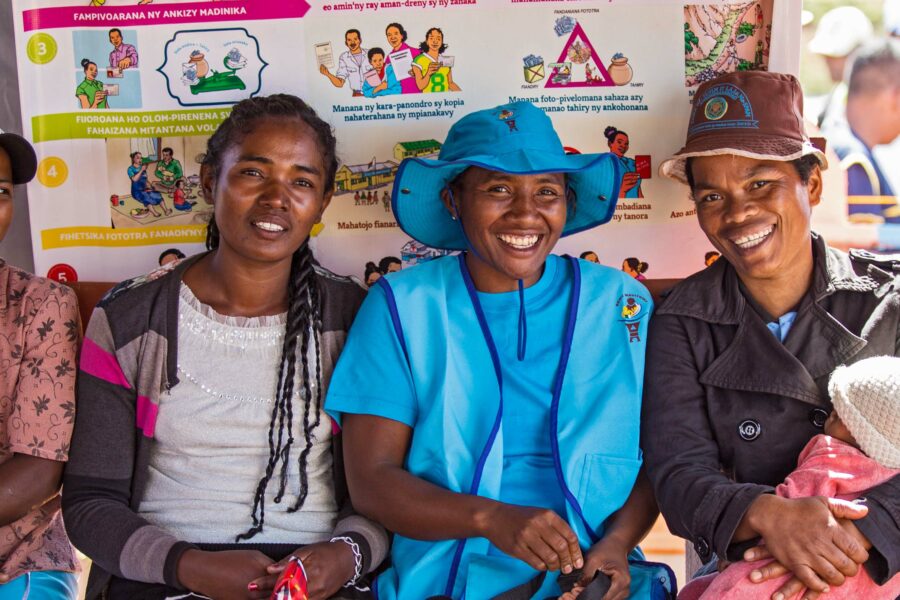The SDGs are the means and the ends
At the halfway point of Agenda 2030, the SDGs are dangerously off course. Current world crises are both evidence of the lamentable lack of progress, and confirmation that the world needs the goals now more than ever
Global governance — Global

“The SDGs are in deep trouble.” The latest SDG progress report, presented to the High-level Political Forum (HLPF), gives a grim assessment. However, the prevailing message – forcefully put – is that the Sustainable Development Goals must and can be achieved.
The COVID-19 pandemic has had a devastating and continued impact on the SDGs. State-based armed conflict, which is at its highest levels since 1945, has compounded the situation. By the end of 2022, there were over 108 million forcibly displaced people worldwide. The Russian invasion of Ukraine led to global economic disruption, creating spikes in energy and food costs.
On the face of it, this series of crises might appear to excuse or at least explain the lack of progress toward the SDGs. In reality, it is evidence of our global failure: all these crises were of our own making, were predictable, and – had we fully embraced the SDGs – avoidable. We had plenty of warning of the threat of pandemics through experience of Ebola, SARS, Zika and swine flu but most countries and the global community as a whole failed to develop robust strategies.
Most of today’s conflicts are based on claims of national or ethnic security but are driven by small cliques seeking power and profit. There are more external actors intent on enflaming the conflicts than defusing them. The global community is still incapable of developing fair and effective forums to avoid or resolve conflicts. In 2022 there were almost a quarter of a million deaths from armed conflict, most suffered in Ukraine and Ethiopia. The civil war in Syria is in its 13th year and Yemen is in its 9th.
All countries are exposed to these failures in global governance. However, countries that have made the most progress on the SDGs have typically been the best prepared and have suffered least damage while navigating these crises. The countries leading the Sustainable Development Solutions Network’s (SDSN’s) SDG Index at the start of the pandemic were largely the most successful at minimizing excess mortality during the pandemic and are showing the strongest post-COVID economic recovery.
The fallout from the pandemic also obscures the fact that the world made weak progress in the first five years of Agenda 2030 and was not on track to meet the goals. The SDGs required a new philosophy and a holistic approach that was largely lacking in existing governance. For them to succeed, the SDG blueprint needed to be embedded into politics, the legal system, education, economic governance, and the functioning of the private sector – both at a country level and internationally.
The SDGs were seen as a virtuous endeavor, and politicians and corporate leaders were quick to claim support. However, most of these claims were merely dressing up business as usual, which was always going to be inadequate for the task. As the SDG progress report says, “we cannot simply continue with more of the same and expect a different result.”
Mutual support
One of the great beauties of Agenda 2030 is the way it recognizes the interrelationships between the SDGs and how they provide mutual support. When the goals are properly integrated, focus can be given to individual SDGs and they should slot together like LEGO®. The flip side is that the mass of goals and targets can feel impenetrable to a newcomer, presenting a barrier to engagement.
The SDG Progress report gives a nod to this and calls for a narrower focus, one that is founded on the ideal of “leave no one behind.” It calls on governments to prioritize:
- eradicating poverty (SDG 1)
- reducing inequality (SDG 10)
- ending the war on nature (SDGs 13, 14, and 15)
- advancing the rights of women and girls (SDG 5)
To achieve this, it urges countries to make the SDGs the focus for all levels of government, from local to national, and to ensure that each level is properly equipped in terms of capacity and institutions.
It acknowledges that the international governance architecture was not up to job: it asks for support in strengthening the UN development system and it is scathing about the global financial system. In its words, “we cannot persist with a morally bankrupt financial system and expect developing countries to meet targets that developed countries met with far fewer constraints.” It challenges Member States to deliver an SDG stimulus of USD 500 billion a year until 2030 to redress the imbalances in the financial system, and channel financial flows to the SDGs.
Politicians and the public have short attention spans – reforms to deliver the SDGs need to be held in the spotlight. Over the next two years, the UN system is geared up to do just that. This September, to mark the midpoint in the SDGs, New York hosts the SDG Summit. At this HLPF, Guterres is tasking world leaders to prepare for the summit so they can deliver a “Rescue Plan for People and Planet” based on:
- equipping governance and institutions for sustainable and inclusive transformation
- prioritizing policies and investments that have multiplier effects across goals
- securing a surge in SDG financing and an enabling environment for developing countries
In 2024, the headline UN event will be the Summit of the Future (SOTF), which was spawned by the UN’S 75th anniversary commemorations and its concluding report Our Common Agenda. Most of that report focuses on SDG acceleration and transformation, and SOTF should keep the SDGs in the forefront of political programs.
SDG Action was established by SDSN to provide the knowledge to shape these transformations. In this edition, we have insightful articles on the core themes identified, as well as on the spotlight SDGs of this year’s HLPF: SDGs 6, 7, 9, 11, and 17.
On the central theme of reforming the global financial architecture, Shari Spiegel gives a thorough analysis of the flaws and sets out the reforms needed; Adriana Abdenur in her foreword to the publication gives a clear picture of the political and governance failings.
In line with the SDG progress report, we explore areas of investment that will bring multiplier effects, including realizing the benefits of digital. Doreen Bogdan-Martin identifies how digital technologies can accelerate all SDGs; Ciyong Zou, Marco Kamiya and Alla Metelitsa look at how technology transfer can boost LDCs; Sima Bahous considers the role of digital in advancing gender equality.
As with most aspects of Agenda 2030, the ends provide the means. SDG 5 – gender equality – is a goal in itself but also a multiplier that will help achieve the other goals: Jess MacArthur looks at the intersection between sanitation (SDG 6) and gender; and Elizabeth Cecelski and Sheila Oparaocha how the lack of access to clean energy (SDG 7) impacts women and girls.
Inequalities increasing
The most troubling feature of recent SDG regression is that inequalities have increased dramatically. The poorest countries have fallen furthest and the most vulnerable in society hit hardest. The essence of Agenda 2030 – leave no one behind – is in jeopardy. As the SDG progress report puts it, the “promise is in peril”. All articles in this edition focus on rescuing that promise.
You would be hard put to find a political leader who will present an informed case denying the merits of the SDGs.
However, most will readily claim that current “unique” circumstances justify deferring structural changes and choosing options that conflict with the SDGs for perceived short-term benefits. These are, invariably, falsely framed choices – there will be a right decision that is consistent with the SDGs.
Game-playing, posturing and deal-making dominate international relations. Leaders assume that their publics want them to win points in a zero-sum game. It is time to recognize that, as we push against multiple planetary boundaries, we are in this together, and ethics and the SDGs must determine how we engage with each other.

